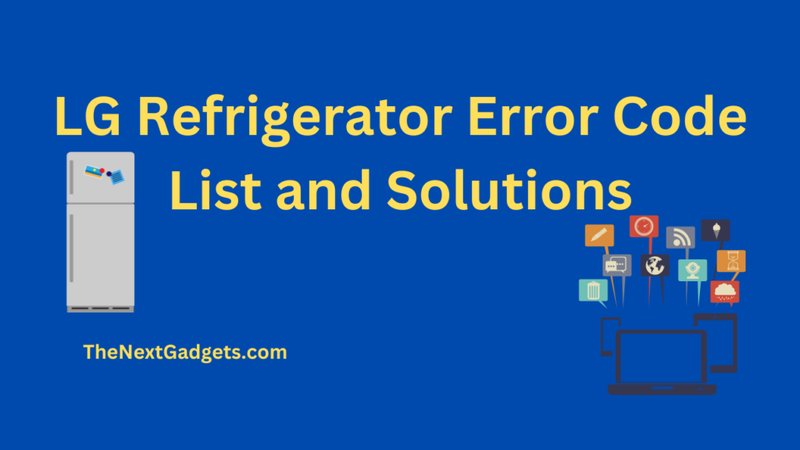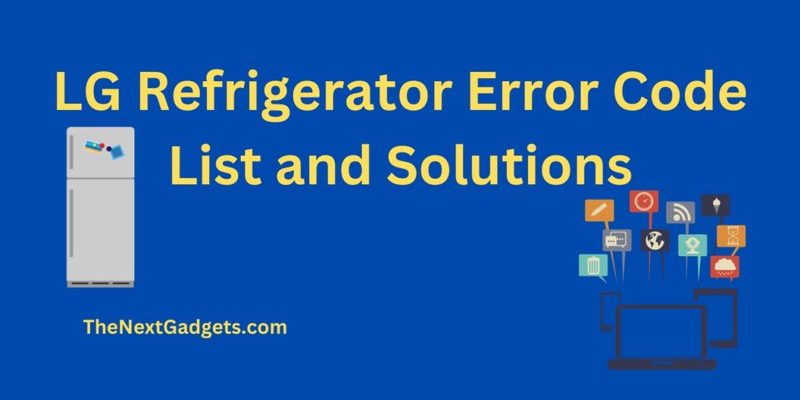
The “E1” error code in LG refrigerators typically points to a problem with the appliance’s freezer temperature sensor. Think of it like your refrigerator’s way of saying “Hey, something’s not quite right here!” Unfortunately, this can affect how well your refrigerator is maintaining the correct temperature. It’s a bit like when your car’s dashboard lights up to alert you to check the engine. You could continue driving, but you know it might not be running as smoothly or efficiently as it should be.
So, is it safe to continue using your LG refrigerator when you see this error? Well, that depends on a few things. If the error is just starting and the temperature inside seems stable, it might be okay for a short while. However, if it persists or you notice that the food isn’t as cold as it should be, it’s time to take action. Ignoring the problem could lead to spoiled food and, in some cases, might affect the longevity of your appliance.
Understanding the E1 Error Code
You might be wondering, what exactly does an error code like E1 mean for my fridge? In simple terms, the E1 error code is a signal from your fridge saying it can’t read the temperature correctly. This is usually due to a faulty sensor in the freezer. Imagine if your body thermometer was broken and you couldn’t tell if you had a fever; it makes things tricky, right? That’s essentially what your fridge is experiencing.
Why does this happen? There are several possible reasons. It could be an electrical glitch, or perhaps the sensor got dislodged or damaged. Sometimes, it might be due to a blockage caused by ice build-up around the sensor. Whatever the cause, this error means that your fridge’s brain—the main control board—can’t receive the right temperature data to keep things at the perfect chill.
The effects of this can range from negligible to potentially significant. If your fridge runs too warm, it could spoil your food faster. On the other hand, if it’s too cold, you might find your lettuce frozen solid! Neither is ideal. So, while the fridge might still run with an E1 error, it’s wise to address it sooner rather than later to maintain the fridge’s efficiency and avoid unnecessary waste.
Steps to Diagnose and Fix the E1 Error
Now that you know what the E1 error means, let’s chat about what you can do about it. First things first—don’t panic! Many homeowners face this issue, and it can often be resolved without too much hassle. Consider this your fridge’s cry for help, and you, the fridge whisperer, ready to respond.
Step one is to check the freezer’s temperature. Is it colder or warmer than it should be? If the difference isn’t drastic, good news! You’re in a less urgent situation. Next, try giving your fridge a gentle reset by unplugging it for a few minutes and then plugging it back in. Sometimes, this simple action can clear minor glitches, much like restarting a computer.
If the error persists or the temperature isn’t right, it might be time for a deeper dive. You could inspect the sensor if you’re comfortable with basic appliance care. However, if this sounds overwhelming—or you simply prefer an expert touch—contacting a professional is always a safe bet. They’ll diagnose the issue more thoroughly and suggest appropriate fixes, whether it’s replacing the sensor or addressing an electrical fault.
Preventative Tips to Keep Your Fridge Running Smoothly
Here’s the deal—maintaining your fridge proactively can prevent not just the E1 error but a host of other potential issues. Think of these tips as your fridge’s regular health check-ups to keep it running like a champ.
Firstly, ensure your fridge isn’t overcrowded. A too-full fridge can hamper air flow, making it harder to maintain even cooling. Also, regularly check and clean the vents inside the freezer to prevent blockages. Ice build-up can often cause temperature sensor issues, so defrosting your freezer periodically is a great practice.
Consider placing a separate thermometer inside your fridge and freezer. This way, you can manually verify that the temperatures are where they should be, providing peace of mind or an early warning if things start to drift. Finally, being attentive to any unusual noises or fluctuations in performance can catch potential issues before they escalate.
In conclusion, while an E1 error in your LG refrigerator isn’t cause for immediate alarm, it’s an important signal to heed. By understanding what it means and how to address it, you can ensure your fridge keeps your food fresh and your household running smoothly. If in doubt, consulting with a professional is always a smart move to safeguard your appliance.
